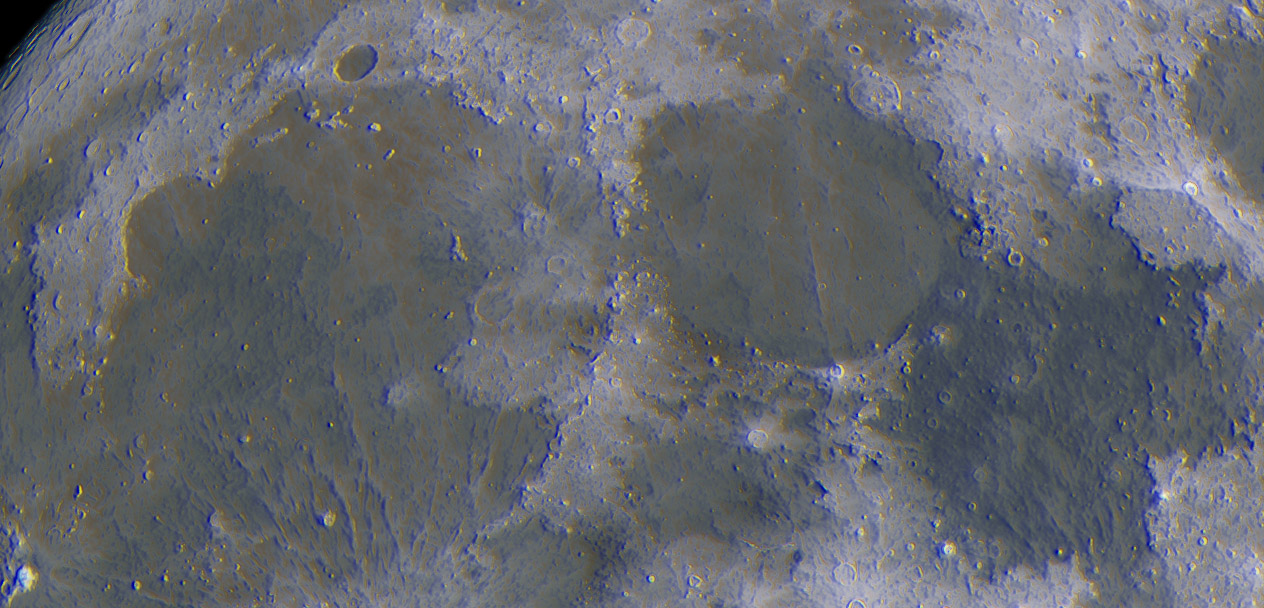October 29, 2020
Textured Reasoning
Originally published April 24, 2011

image by Thilo Schramm, Kiel, Germany
Here is an image that is very different than any we have seen. It is a full Moon view but
haves a strong 3-D effect. All Thilo did was "shift the blue channel some pixels." So this
image is not revealing topography, but still reveals interesting features. Two things are
most notable. First, rays show up like mare ridges because the displaced blue pixels look
like shadows of the brighter red and green ones. Thus, the rays from Copernicus appear
as radiating ridges. Older and fainter ridges must have less blue for they simply look like
faint rays - see north-eastern Imbrium. The second notable feature is the ruggedness of
some maria, especially Tranquillitatis. The offset of the blue pixels would have maximum
3-D effect for lunar materials that reflect more strongly in the blue - that would be titanium.
Comparison with a compositional map shows a nearly perfect match of titanium and
rough texture on the Thilo image. In fact, perhaps the reason rays don't appear as ridges
in north east Imbrium is that the lavas there are titanium-poor. This would make sense
because the small projectiles that make rays excavate the material where they hit.
Chuck Wood
Technical Details
17.04.2011; 23h30m, MESZ. Astrophysics Traveller, Focal length: 620mm; Camera: Point
Grey, Grasshopper, Filter: RGB; Digital Development: Photoshop CS3
Yesterday's LPOD: Spectacles
Tomorrow's LPOD: The Ultimate Meteor Shower
COMMENTS?
Register, Log in, and join in the comments.



